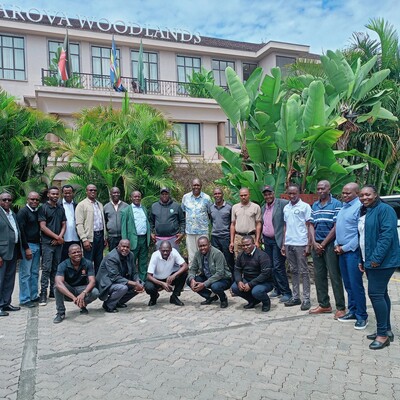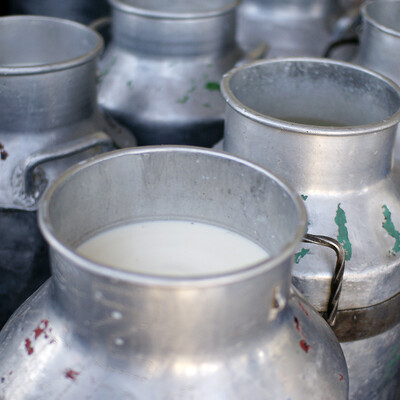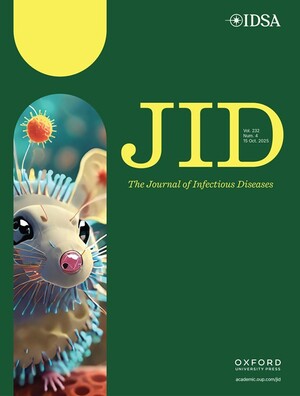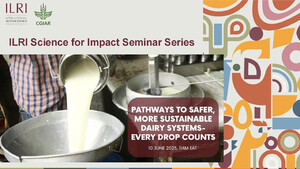
Importance of considering gender for sustainability of development programs
Livestock are a major source of livelihood for many farmers across the world. Livestock serve as a source of employment, food, nutrition and development.
Women make up the majority of the world’s livestock keepers and tend to play key roles. Women provide support in livestock management, processing and marketing, acting as care providers, feed gatherers and birth attendants. They are also involved in milk production. However, despite all the labour they put in, women do not always benefit from livestock production. Women in many parts of the globe find it easier to own and control livestock species such as poultry and small ruminants, rather than large animals which are mainly owned and controlled by men.
The scenario is no different in Kenya. Findings from a recent study on the dairy sector show that women are willing to change and provide labour to livestock activities whose income is within their control. These could include poultry keeping and rearing goats and sheep. However, this casts doubt on the social sustainability and gender equity of dairy commercialization efforts.
The study, titled ‘Nested Scales of Sustainable Livelihoods: Gendered Perspectives on Small-Scale Dairy Development in Kenya’ examines the outcomes of small-scale dairy development in western Kenya, using the sustainable livelihoods framework (SLF). SLF allows for a sustainability aspect to be assimilated into the planning, implementation and evaluation of rural development programs. Three dairy development hubs associated with the East Africa Dairy Development (EADD) program were used as case studies to gather and analyse responses from beneficiaries of the program. The EADD program aims to improve small-scale dairying through an integrated value chain development approach whereby increased milk productivity results in higher incomes.
Key informant interviews were conducted to understand (i) whether gender shapes differing views on the preferred outcomes of dairy development and (ii) how gendered constructions situate small-scale dairy practices—not only within the household but also within wider scales of community and state practices. The work mainly examines whether women and men dairy farmers view the adoption of new development opportunities through an economic concept of productivity, or if they also mention aspects compatible with sustainability.
The participants identified three benefits accruing to the program—increase in income, access to market, and ability to keep improved cattle. More men than women identified improved cattle as a benefit. This could be because women are less likely to own cattle in Kenya and control proceeds from dairy. Prices and artificial insemination services were identified as both benefits and problems. These could be traced to differences across the study sites, but also reflected that respondents were seeking improvements without necessarily wanting to belittle what was currently available. In addition, the gendered nature of household work became visible since more women than men pointed out the problem of access to and availability of water as a major constraint.
While income and productivity were prized by all respondents, these benefits could be seen in more diverse ways when viewed from a gender lens—not only within the household but also through the links to the wider community and the role of the state.
This study demonstrates that there is a need for development programs to place farmer households in the broader community and national context to be able to fulfil adequate sustainability goals. On one hand, it is important to recognise the consequences of certain underlying factors, such as lack of water supply or electricity, which lead to an increase in women’s work. As such, the role of the state in providing infrastructure also becomes important in terms of gender and sustainable livelihoods. On the other hand, adopting improved cattle may affect the local diversity of cattle breeds, which needs to be considered in breeding programs.
This calls for a shift from being focused on human livelihoods to also considering animal environments. The study, therefore, shows that a gendered view of sustainability can be used to inform the planning and implementation of dairy productivity programs.
This blog is drawn from a journal article published by Pratyusha Basu, associate professor in sociology and anthropology at the University of Texas (pbasu@utep.edu) and Alessandra Galiè, gender team leader at ILRI (a.galiè@cgiar.org).
Read the full article here for more insights, and click here for more of ILRI's work on gender.
Citation
Basu, P. and Galiè, A. 2021. Nested scales of sustainable livelihoods: Gendered perspectives on small-scale dairy development in Kenya. Sustainability 13(16):9396.


















